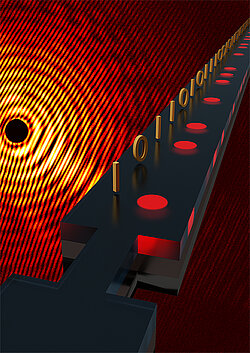Scientists have produced skyrmions using sandwich structures of platinum, a magnetic alloy of cobalt, iron and boron, and magnesium oxide. Dr. MIT explains: "Due to the spin-reverb effect, a quantum mechanical effect, and a special interaction of the atoms at the interfaces of the materials, skyrmions can be selectively generated by current pulses, which is directly possible in so-called racetrack structures at predetermined points, which is essential for controlled data writing. " The racetrack structures are nanometer-thin wires of stacked magnetic materials. The researchers were able to pinpoint the exact location of the magnetic vortex by adding a small additional narrowing in the wire.
The fact that the special skyrmion magnetic vortices were actually generated and pushed into the racetrack wire with another current pulse was proven by the scientists at the German electron synchrotron DESY in Hamburg using X-rays. "X-ray holography makes it extremely sensitive to detect these very small magnetic structures, so the magnetization vertebrae can be imaged with a resolution of about 20 nanometers," explains Dr. med. Bastian Pfau, one of the scientists of the MBI team.
The scientists have been able to follow in their investigations how skyrmions are generated with individual current pulses, which are then moved with further pulses. It was important to understand the basic processes: what happens in the few nanometer thin layers of the material and at the interfaces, when single short current pulses with a duration in the range of nanoseconds are passed through the material? How do electrons from the platinum layer during the current pulses affect the magnetization in the adjacent cobalt alloy to form skyrmions with a certain sense of rotation? For this purpose, the team has compared its observations with micromagnetic simulations, in which the processes are simulated in the computer. "These insights into the microscopic mechanism will decisively help us to further develop the concepts and materials for future data storage technologies," says Büttner.
